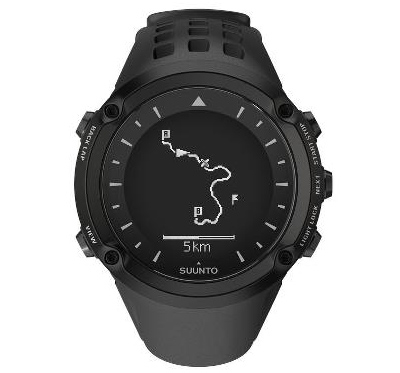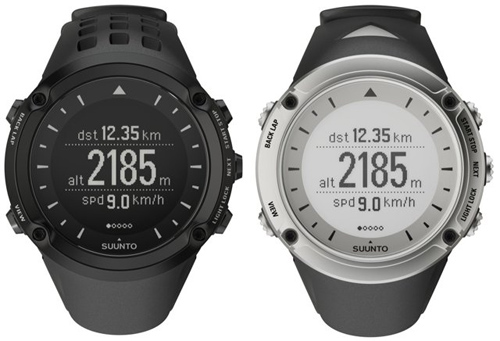Suunto’s new Ambit, billed as “the GPS for explorers,” is the industry’s most expensive GPS watch. At $500, its hardware and software are well built, it’s good looking, and it has features other watches can’t match.
This month, we took it outside for a test. First thing: This is a good-looking machine on par with anything Garmin or other big boys make. The Ambit also is one of the only watches of its type that doesn’t look like it’s built only for communicating with satellites in outer space (even though that’s exactly what’s going on!).

The watch offers some unique features. The best new feature may be the accuracy of the speed data. The Ambit combines its GPS data with its accelerometer data, which leads to a more accurate reading of actual speed.
You get quicker response to speed changes, as well as a continuous speed-reading even during periods when the GPS signal is temporarily lost. Suunto calls this technology FUSEDSPEED, and it’s an industry first to our knowledge. Smart.
Another thing, this is a burly watch — the Ambit gives confidence that I am not going to have to worry about it if I fall, get it wet, or drop it. The display is well recessed beneath a bumper, it’s water-resistant to 300 feet, and Suunto has a solid build reputation with GearJunkie and beyond, so the confidence it inspires is well-founded.
The charging cable and heart-rate strap are similarly well-built, both better than anything else on the market I’ve seen.
The Movescount software is intuitive. I used Suunto’s software to analyze my workout data. The software links and uploads data from watch to the computer quick and easy.

I didn’t read any instructions or watch any YouTube videos to get myself quickly elbow deep in maps and graphs of my workouts in the woods. This is a marked advantage Suunto has over its competitors.
Waypoint and route navigation empowers users to download routes for the watch’s mapping feature. A user can load GPS waypoints from the watch for use later on a computer to look at routes. That’s one scenario.









